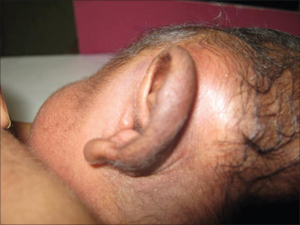Battle's sign
Jump to navigation
Jump to search
| Battle's sign | |
|---|---|
 | |
| Battle's sign | |
Battle's sign, also known as mastoid ecchymosis, is an indication of fracture of middle cranial fossa of the skull. These fractures may be associated with underlying brain trauma. Battle's sign consists of bruising over the mastoid process as a result of extravasation of blood along the path of the posterior auricular artery.[1]
Battle's sign takes at least one day to appear after the initial traumatic basilar skull fracture, similar to raccoon eyes.[2] It is usually seen after head injuries resulting in injury to mastoid process leading to bruising.
Battle's sign may be confused with a spreading hematoma from a fracture of the mandibular condyle,[3] which is a less serious injury.
The sign is named after William Henry Battle.[4]
See also
References
- ↑ Naumann, Hans Heinz; Jan Helms (1998). Head and neck surgery. Thieme. p. 154. ISBN 0-86577-660-1. Archived from the original on 2023-08-11. Retrieved 2020-11-08.
- ↑ Handbook of Signs & Symptoms (Third Edition)
- ↑ Banks, Peter; Brown, Andrew E. (2000). Fractures of the facial skeleton. Oxford: Wright. p. 43. ISBN 0723610347.
- ↑ synd/2976 at Who Named It?